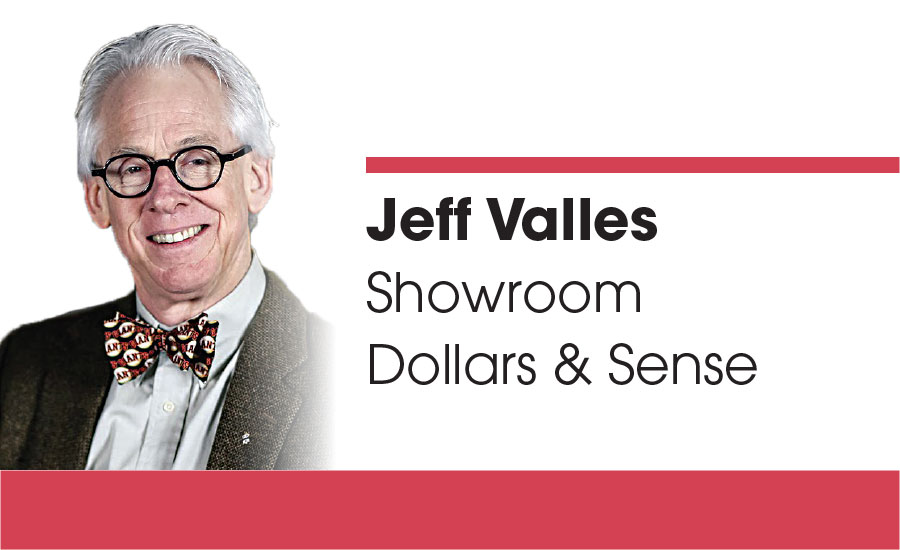Jeff Valles: Let's work together to stop low-ball pricing

Let’s all agree that a company can sit in a low-cost business overhead situation and survive while creating little to no organic business. They subsist on winning existing quotes by offering overly aggressive discounts. Agreed?
I am not pointing fingers. This business model exists in all markets in all business types. It serves only to slowly drive down product pricing, thereby decreasing distributor and vendor profits. The answer is not complicated. We cannot allow it to persist in the premium and luxury markets. We have the tools to fight this model and we need to get at it. If we do not, this market will continue to slip into a few very large vendors and distributors being able to scale with low-margin products and push a lot of us out. Yes, both manufacturers and distributors.
Manufacturers, do you not see this affecting your business and the reputation of your brand? Have you seen the ever-expanding offering of private-label products? Do you think a top salesperson with a commission-based salary is going to specify your products if they can be humiliatingly undercut by the market low-baller? How much marketing money and space can a showroom offer your brand if your line does not generate the necessary profits? Have you not read about the expanding DTC vendors cropping up everywhere, financed by big venture-capital money? All of that is taking market share away from you. Plus, every time your luxury brand is sold by that low-overhead shop, customer service is nonexistent and your brand’s image will suffer.
While on the showroom side, we did not worry short-term about losing an individual sale on price, but we did focus on each brand’s gross margin. Margin was an important factor when we allocated marketing funds, display funds and display space. No line was given a free pass. If the brand’s numbers were consistently declining over time, we would diminish its presence. A DPH showroom does not need 20 faucet lines. A DPH showroom does need a good gross margin.
Now it is time for vendors, distributors and showrooms to work more closely together. We need each other. Showrooms: Without brilliant new products, our elegant showrooms will slowly fade into the sunset. Vendors: Without showrooms intelligently and energetically presenting and supporting your products for the last mile you, too, will struggle mightily. We are all in this together.
Finally, this is not about internet sites. There are internet sites that do a fabulous job supporting the premium, luxury market and are good competition. But, there are others that offer 35% off list plus a 20% discount coupon and free freight. Those sites need to be culled. Those that want to build a long-term, profitable brand — fine by me.
I am not suggesting that we raise prices so that we push ourselves out of the market, but this discounting game must be corralled. If margins continue to erode, both vendors and showrooms will not be able to deliver the level of service excellence that interior designers, builders, plumbers and homeowners demand. This high level of customer service is no longer a selling point. It has become table stakes.
In today’s plumbing world, implementing the powerful tandem of minimum advertising price (MAP) and minimum resale price (MRP) creates a versatile, protective framework. We placed brands that implemented this pricing framework in the most coveted sections of our showrooms and our sales team loved to sell them. Over time, they not only became our largest vendors, but they added significantly to our bottom line.
Customers will pay more for special products supported by outstanding service. That defines the DPH partnership between vendor and showroom that has been so successful over the last 40 years. Let’s disrupt our market by finding a way to drastically minimize the reach of a business model that simply survives on low prices.
Looking for a reprint of this article?
From high-res PDFs to custom plaques, order your copy today!





